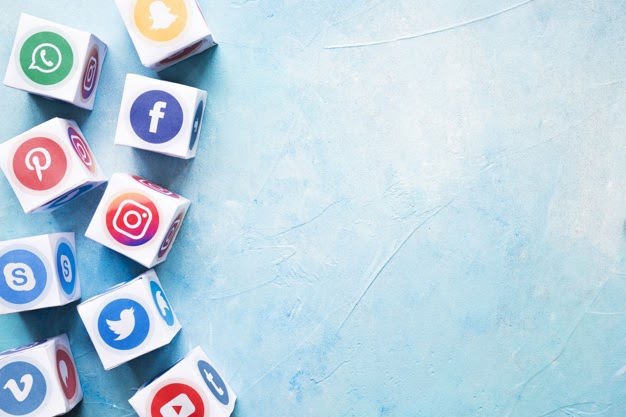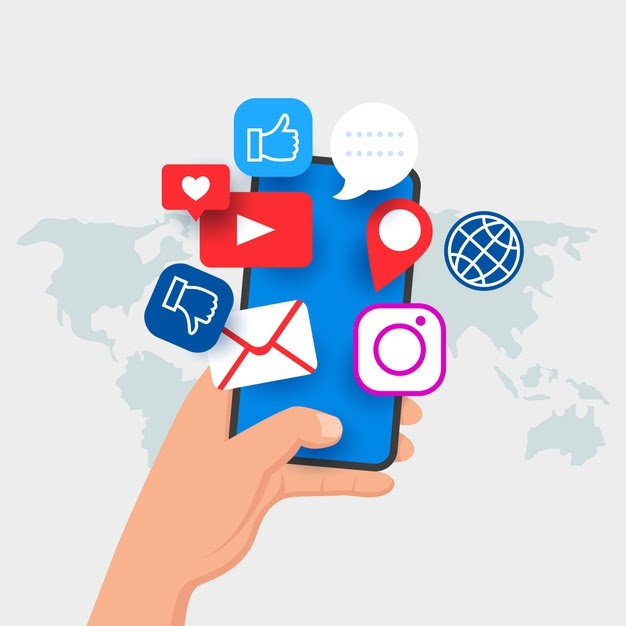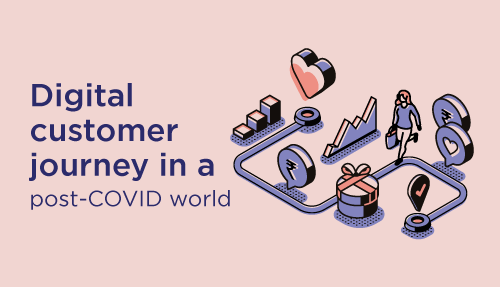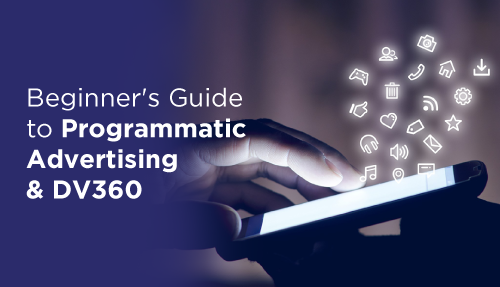Are you wondering how to learn social media marketing? You’ve landed on the right page.
Social Media Marketing is becoming one of the fastest-growing aspects of Digital Marketing, which enables marketers to increase their brand awareness to a greater extent. Covid 19 has only accelerated this trend even further.
Marketing through Social Media is important because:
- According to Statista, nearly 50% of the world’s population uses social media, and that’s over 3 billion users worldwide.
- According to GlobalWebIndex, each person spends about 2 hours and 22 minutes on social networking sites and apps.
The data also proves that users have also started following popular brands and businesses on Social Media. The scenario has changed and it’s vital to learn social media marketing as every business needs to have a social media presence. It is important to constantly engage with the customers to keep the consumers remembered about your brand.
Let’s dive deep into the importance and role of Social Media Marketing:
- Increased Brand Awareness: Social Media is a natural place to engage with your existing customers and target a new segment of customers on a day to day basis. This means that your business can grow exponentially.
- Enables connectivity: To connect with potential customers – it’s important to establish brand trust. The ability to create an emotional connection with your customers on Social Media helps in creating credibility for the brand to grow in the long run.
- Increase Website Traffic: Social media posts and ads acts as a key to driving traffic to the website. Creating great content about your brand, delivers a great impression, and make the consumers click on it and land to the website.
- Lead Generation: Marketing through social media is the easiest method to generate leads in the most cost-effective way. It offers an easy and low-commitment way for potential customers to show interest in the business and it does not require any hard-selling methods. The lead generation also helps in retargeting.
- Boost Sales: As the number of users on Social Media is increasing, it’s important to include it as a major factor in the sales funnel – It helps in converting every new lead into a customer and to engage with them. Social Network is important for product search and E-commerce.
Being a social media marketer comes up with a lot of fun responsibilities. Yes, you heard me right! Can the responsibilities be fun? Absolutely!
If you are wondering how to be a social media marketer and if you are someone who loves being creative, then this is your chance! Upskilling yourself by learning Social Media Marketing is one of the top skills that would speak volumes on your resume. Social Media Marketers earn an average salary of 5.6 lakhs per year which is just at the start of your career.
Everything being said, it’s your chance to start learning and now that you have understood the importance and role of social media marketing, let’s look at how to be a social media marketer in India. We have curated the top courses and even some books for you. If you are looking at broader courses around digital marketing, you can check out this link.
Let’s get started!
| Name of the Platform | Certifications provided | Faculties | Fees & Duration | Key factors |
|---|---|---|---|---|
| Digigrad | Digigrad & Social Beat Certified |
Lalitha Shukla, Senior Manager-Digital Strategist, Social Beat Srinidhi Maheshwari, Senior Manager- Digital Marketing, Social Beat Aishwarya Merwade, Manager, Assetz |
Rs.10,000 + GST – 4 weeks | Harvard-style case study learning methodology |
| Digital Vidya | Google, HubSpot, and Government of India |
Kapil Nakra, Co-founder, Digital Vidya Shubhendu Jha, Co-Founder, WeBeeSocial |
Rs.11,900 + GST – One month | Industry-based live projects |
| Simplilearn | Simplilearn Certified | Kapil Nakra, Co-founder, Digital Vidya
Shubhendu Jha, Co-Founder, WeBeeSocial |
Rs.15,999.- Self-paced learning. | High-quality self-paced e-learning content |
| Digital Academy 30 | HubSpot & Facebook. | – | – | An experience like classroom training. |
| NIIT | NIIT Certified | Aditya Pandey, Lead Instructor – Digital Marketing with NIIT Ltd | Rs. 6,700/- | Innovative learning methods |
| Udemy | Udemy Certified | – | Rs.455/- | Budget-friendly |
| Coursera | Coursera Certified | Chris J. Vargo, Assistant Professor – the University of Colorado Boulder |
Rs.3659/- | Graded Assignments and Case Studies |
Top Social Media Marketing Courses in India

Digigrad:
DigiGrad answers all your questions on how to be a social media marketer. DigiGrad is an educational initiative of Social Beat – a Google Premier Partner and a badged Facebook Business Partner. They aim at providing quality Digital training in an online classroom setting. It’s an IIM Alumni initiative and the mission is to deliver Harvard-style Case Study based Learning Methodology and live classes.
Digigrad’s strong forward-thinking approach can be noticed from their vision – To train 1 lakh Digital Marketing Professionals, in the next two years.
The Social Media Marketing training course offered by Digigrad helps in gaining real-time industry experience with live projects, assignments, and assistance with Internships and placements opportunities.
Why Digigrad?
- Get an opportunity to learn from the award-winning Industry-leaders like:
Suneil Chawla, Co-founder, Social Beat – Alumnus, IIM Ahmedabad (2007) | Vikas Chawla, Co-founder, Social Beat Alumnus, London School of Economics (2009) | David Appaswamy, Head-Brand & Strategy, Social Beat | Abhishek Kumaar, Head, DigiGrad – Alumnus, IIM Ahmedabad (2014). - 20 hours of live classes: Enables students to understand the concepts in a much easier way and get answers to your queries from Instructors in real-time.
- 15 hours of live case studies & assignments: Digigrad believes in practical learning. The assignments and case studies are based on real, ongoing projects of the agency to make learning more practical.
- Experiential training on platforms such as Facebook, Linkedin, Instagram, Twitter,YouTube, TikTok, Pinterest, Snapchat, and Special Modules on Vernacular, Video & Voice Marketing.
- Certifications: Certified by Digigrad and Social Beat.
What will you receive?
- A social media marketing training course certificate of completion along with placement and internship assistance after the completion of the course.
- Get Lifetime Access to different learning materials and content
Course Duration and Fees structure: Rs.10,000 + GST and the duration of the course is for 4 weeks. They also have the digital marketing master program which covers aspects like content marketing, digital advertising and media planning too.
Digital Vidya:
Digital Vidya is a leading professional training institution that aims at providing the right skill-set for freshers and professionals. They have provided quality education for over 35+ professionals across 55+ countries. Digital Vidya has also successfully partnered with top Social tycoons such as Facebook, LinkedIn, NASSCOM & Vskills to make the learning experience better.
The Social Media Marketing Training Course offered by Digital Vidya acts as an eye-opener for all the passionate marketers. Digital Vidya offers live instructor-led sessions which makes the learning more interactive.
Why Digital Vidya?
- Get an opportunity to learn from the Industry-experts such as:
Kapil Nakra, Co-founder, Digital Vidya | Shubhendu Jha, Co-Founder, WeBeeSocial | Pradeep Chopra, Co-founder, Digital Vidya | Rohit Uttamchandani, Senior Manager, Social Beat. - 12+ hours of live classes: Digital Vidya specialises in providing instructor-led live sessions which covers all aspects of marketing through Social Media in a detailed which covers around 10 modules.
- 4+ Hands-on projects: Digital Vidya trains students based on industry-based projects to get hands-on experience on how an agency works for different clients.
- Certifications: Get Certified from Google, Hubspot, and Government of India.
What will you receive?
- Free Social Media tools worth Rs.40,000 +
- Lifetime access to all the learning materials
- 100% Interview Guarantee
Course Duration and Fees structure: Rs.11,900 + GST and the duration of the course is one month.

Simplilearn
Simplilearn is on a journey to transform lives by empowering people through Digital skills. Simplilearn is one of the world’s leading certification training providers in various areas and offers one of the best digital marketing certification programs. They have empowered over one million professionals and companies across 150+ countries. Simplilearn has been named as the 8th most influential education brand in the world by LinkedIn. The Simplilearn’s Advance Social Media Marketing Training Course Certification will help you transform as a successful Social Media Marketer. Learn social media marketing and become a specialist in creating creative copies, influencer marketing, and much more.
Why Simplilearn?
- Get an opportunity to learn from the Industry-leaders such as Stéphane Hamel Google Product Strategy Expert, Expert Data Analyst | Greg JarboeExpert Content marketer, President of SEO-PR, Author.
- 65 Hours of Blended learning: The modules are designed in such a way that anyone can learn and it starts from the basic level and goes till advanced. The seven modules consist of all the platforms and tools in Social Media.
- 25+ real-life industry-based live projects: Simplilearnprovides the opportunity to work on projects based on Content marketing, converged media & social media strategies.
- Tools covered: Facebook insights | Youtube Analytics | Buffer | Hootsuite | Social Studio.
- Certifications: Certificate from Simplilearn
What will you receive?
- Self-paced learning with lifetime access to all the learning materials
- 24×7 learner assistance and support.
Course Duration and Fees structure: Rs.15,999. Simplilearn offers Self-paced learning.

Digital Academy 360
Their vision is to redefine the education system in India and transform the journey of their students into leading professionals. Digital Academy 360 was awarded as the “Best Digital Learning Institute of the year” by Indian Education Awards 2019. They focus on teaching the course from a basic to an advanced level. Their social media marketing training courses are suitable for both beginners and professionals. Digital Academy 360 was also the first institute to kick start a content writing classroom training program. Learn social media marketing through their Social Media Master program designed for freshers, working professionals, entrepreneurs & freelancers.
Why Digital Academy 360?
- 54 Hours Classroom Training: Aims at providing 80% practical and 20% theoretical knowledge covering 16+ topics and 6+ Social media tools.
- 5+ Top Industry Case studies: Enabling professionals to gain practical knowledge through designing creative strategies for live projects. It also helps you in understanding the actual corporate environment.
- Live Projects: Students will work on agency projects which would enable them to develop websites, run ad campaigns and create digital marketing strategies.
- Certifications: Get certified from Digital Academy 30, Facebook, and Hubspot.
- Tools covered: Hootsuite, Buffer, Canva, IFTTT, Tweetdeck

NIIT
NIIT is a leading Skills and Talent Development Corporation with a strong focus on assuming a leadership role in the Digital Learning World. Through NIIT Digital, learners can access their learning materials from anywhere and they have put together a great team of Industry-experts to deliver effective learning through online live classes.
NIIT was recognized as ‘Best Education Company to work with” at Indian Education Congress & Awards 2020. The Social Media Marketing training course offered by NIIT is designed based on the new age goals and makes you equipped to build effective strategies.
The programme is designed to make beginners learn social media marketing and be conversant with Social Media tools and techniques.
Why NIIT?
- Get an opportunity to learn from the Industry-expert: Aditya Pandey, Lead Instructor – Digital Marketing with NIIT Ltd who is an expert in Digital Marketing and passionate about teaching.
- 40 hours of live classes: The curriculum is built based on the industry and offers Hybrid learning: live classes + E-learning. The online classes give the students classroom-like experience which enhances the practical experience.
- Role plays & Case studies: NIIT enables online & skill-based tests along with role-playing & case studies.
- Experiential training on platforms such as Facebook, YouTube, Twitter, Google, Instagram, Pinterest, Google Plus.
- Certifications: NIIT Certificate
What will you receive?
- Learning Resources
- Peer and faculty connect
- NIIT Centre support for mentoring
Fees structure: Rs. 6,700/-
Our top picks for Pre-recorded courses

Udemy
Udemy is the leading global platform for learning and they are helping individuals reach their goals by pursuing their dream career. Udemy’s vision is to transform learning experiences by giving access to online courses to anyone from anywhere. Udemy is the leading global marketplace for teaching and learning, connecting millions of students to the skills they need to succeed. The courses at Udemy helps students and professionals to keep up with the rapidly evolving workplace. The Social Media Marketing training course offered by Udemy specializes mainly at learning advertising on different platforms like Facebook, LinkedIn, YouTube, Twitter, and much more.
The course briefly provides the strategies and principles of Social Media Marketing that has worked with leading brands, providing you with all answers on how to be a social media marketer!
Why Udemy?
- 8 – Hours on-demand Videos: The course will equip you with all the skills you need to be a successful social media marketer starting from Facebook advertising, SEO, blogs, and much more.
- Articles and Resources: Udemy gives access to more than 36 articles and 24 downloadable resources for extensive learning apart from the videos.
What will you receive?
- Full-time access to all the videos and learning resources.
- Access to mobile devices and TV.
- Certificate of Completion from Udemy.
Course duration & Fees structure: Self-paced learning at Rs.455/-

Coursera
Coursera visualizes a world where anyone and everyone is given the ability to transform their career by accessing the world’s top learning resources from Coursera. Every course is taught by highly qualified instructors from leading universities all over the world. Coursera also provides a plethora of free courses that provide access to learning resources and videos. They offer guided projects, specializations, professional certificates, and online degrees. The Social Media Marketing training course offered by Coursera is for beginners who are just starting to learn Social Media marketing basics. This course helps you in learning from basic to advanced advertising techniques such as lookalike modelling and audience retargeting on three major social media platforms – Facebook, Twitter, and Instagram.
Why Coursera?
- Get an opportunity to learn from the Industry-expert: Chris J. Vargo, Assistant Professor – the University of Colorado Boulder who specializes in data analytics and digital advertising.
- 10-hours on-demand videos: Comprises of more than four different modules that encompass effective social media targeting and advertising.
- Case studies: After successful completion of every module, Coursera provides case study assignments for a better understanding of the subject matter.
What will you receive?
- Full-time access to all the videos and learning resources.
- Certificate of Completion from Coursera
- Self-paced learning option along with assignments and graded quizzes.
Fees structure: Self-paced learning at Rs.3659/-

Conclusion: On the whole, all these social media marketing training courses will help you in pursuing your career goals and will provide you with valuable insights on how to be a social media marketer.
If you are someone who is looking to dive deeper into Digital Marketing and build a successful digital marketing career in India, have a look at courses offered by Digigrad – They are budget-friendly and offer live classes.
Happy Learning!








